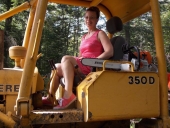
 18
18








https://permies.com/t/85623/CruxHomes-Affordable-Passive-Home-Design & https://CruxHomes.com
Bessie Anderson Stanley: He has achieved success who has lived well, laughed often, and loved much; Who has enjoyed the trust of pure women, the respect of intelligent men and the love of little children; Who has filled his niche and accomplished his task...








Cj Thouret wrote:Hi Travis,
Thanks very much for the post. I'm new to this forum . . . this is actually my first post! I'm good with the rest of the items, but I was hoping you could explain the #2 rule a bit more . . . especially since I'm planning on moving to Maine . . .
Cheers,
CJ




https://permies.com/t/85623/CruxHomes-Affordable-Passive-Home-Design & https://CruxHomes.com
Bessie Anderson Stanley: He has achieved success who has lived well, laughed often, and loved much; Who has enjoyed the trust of pure women, the respect of intelligent men and the love of little children; Who has filled his niche and accomplished his task...
 2
2




Joe




Cj Thouret wrote:Thank you again!
I'm somewhat new to this permaculture stuff, although I've been assembling bits and pieces on my own for years. By biggest problem with permaculture is that there is soooooo much to know and often many ways to do things (though lots of people seem to think theirs is the only way, however). The result is, at least for my feeble mind, some confusion and not being sure what should be done. That being said . . .
My inclination is to try to use that brush, etc. for something useful and therefore not leave it to rot. The flip side of that . . . it's my understanding that the forest likes / needs a certain amount decaying biomass to be healthy. I was hoping you could comment on that as well.
My goal is to end up with a few to several acres near Augusta Maine near where my parents are going to retire and sustainably use those acres to be as self sufficient as possible.
We really don't know how much we don't know.









Travis Johnson wrote:I wish I could remember how much nutrients are lost from taking the whole tree instead of just the bole, but it is significant, something like an extra 40% of the tree. That is why I cringe with the latest logging trend for whole tree chipping. Yes the landowner gets more money since more wood is being removed, but for what? Biomass only pays $1 a ton.
Right now I am clearing forest into field and so any remaining brush will be burned so the more I can get rid of, the better.
Idle dreamer




Sometimes the answer is not to cross an old bridge, nor to burn it, but to build a better bridge.




Idle dreamer




Tyler Ludens wrote:I meant on that patch of land (but you knew that).
Sometimes the answer is not to cross an old bridge, nor to burn it, but to build a better bridge.
 1
1




Idle dreamer
 2
2








Tyler Ludens wrote:Seems like a lot more life would result from the rotting tree than from the burnt tree.




We really don't know how much we don't know.
 3
3




Jotham Bessey wrote:Unfortunately, by speeding up the release of nitrogen you also increase the nitrogen spike in nearby waters. better to have a brush pile windrow around the field I think.




Travis Johnson wrote:I wish I could remember how much nutrients are lost from taking the whole tree instead of just the bole, but it is significant, something like an extra 40% of the tree. That is why I cringe with the latest logging trend for whole tree chipping. Yes the landowner gets more money since more wood is being removed, but for what? Biomass only pays $1 a ton.
 1
1





 1
1




https://permies.com/t/85623/CruxHomes-Affordable-Passive-Home-Design & https://CruxHomes.com
Bessie Anderson Stanley: He has achieved success who has lived well, laughed often, and loved much; Who has enjoyed the trust of pure women, the respect of intelligent men and the love of little children; Who has filled his niche and accomplished his task...




“The most important decision we make is whether we believe we live in a friendly or hostile universe.”― Albert Einstein
 3
3




Travis Johnson wrote:
Quoted from: Fire Science Brief
http://digitalcommons.unl.edu/cgi/viewcontent.cgi?article=1079&context=jfspbriefs
1) Elevated nitrogen levels in soils and vegetation of riparian forests were far more pronounced following high-intensity
wildfires compared to low-intensity spring prescribed fires.
2)The moderately elevated nitrogen pulse in soils and terrestrial plants from spring prescribed fires had typically
disappeared by the end of the first growing season.
3)In most cases the brief nitrogen pulse in soil after spring prescribed fires was completely contained within the
terrestrial ecosystem and did not reach adjacent streams.
Mike
http://tenderfootfarmer.ca
 4
4




 !
!












 3
3






|
Happiness is not a goal ... it's a by-product of a life well lived - Eleanor Roosevelt. Tiny ad:
The new kickstarter is now live!
https://www.kickstarter.com/projects/paulwheaton/garden-cards
|







